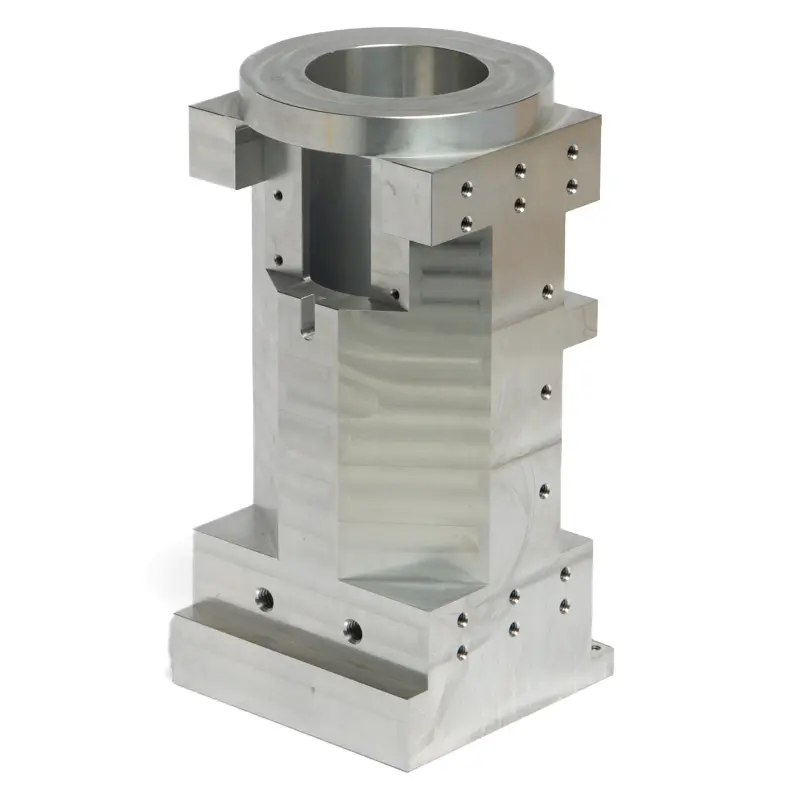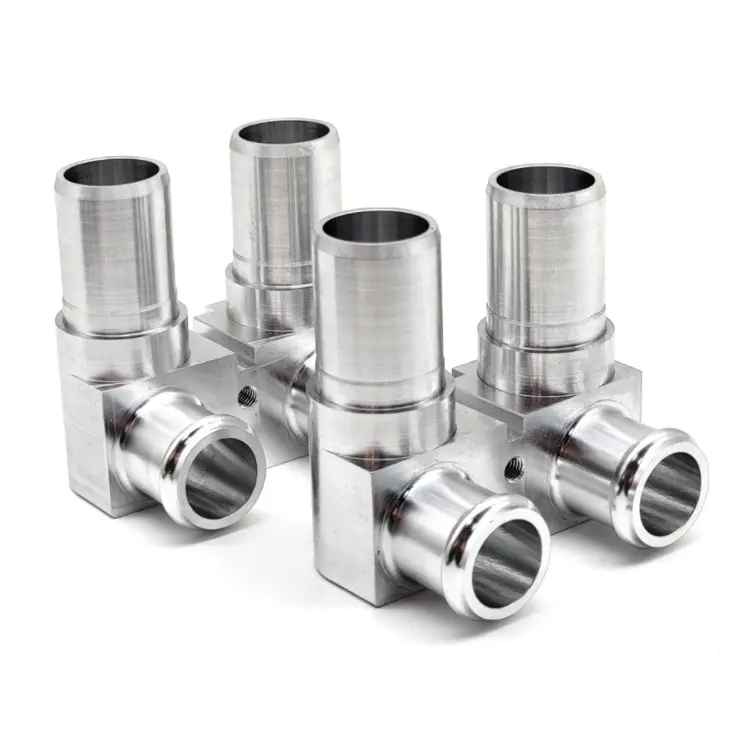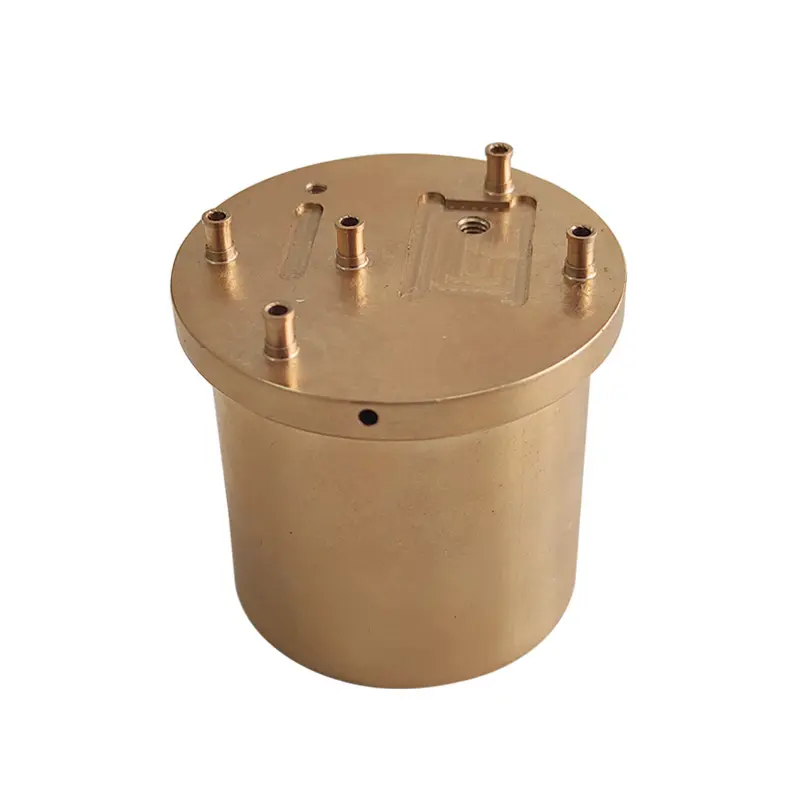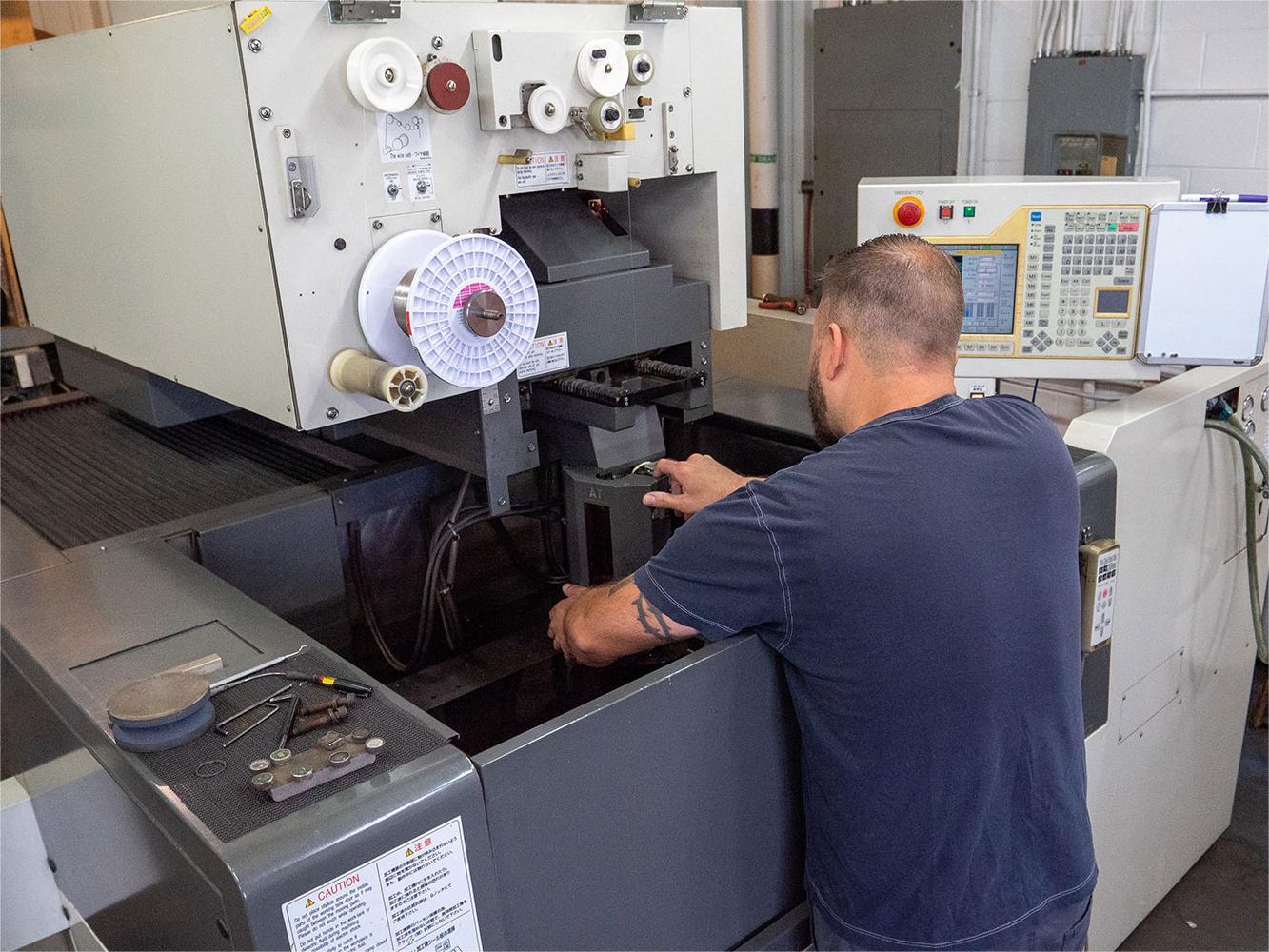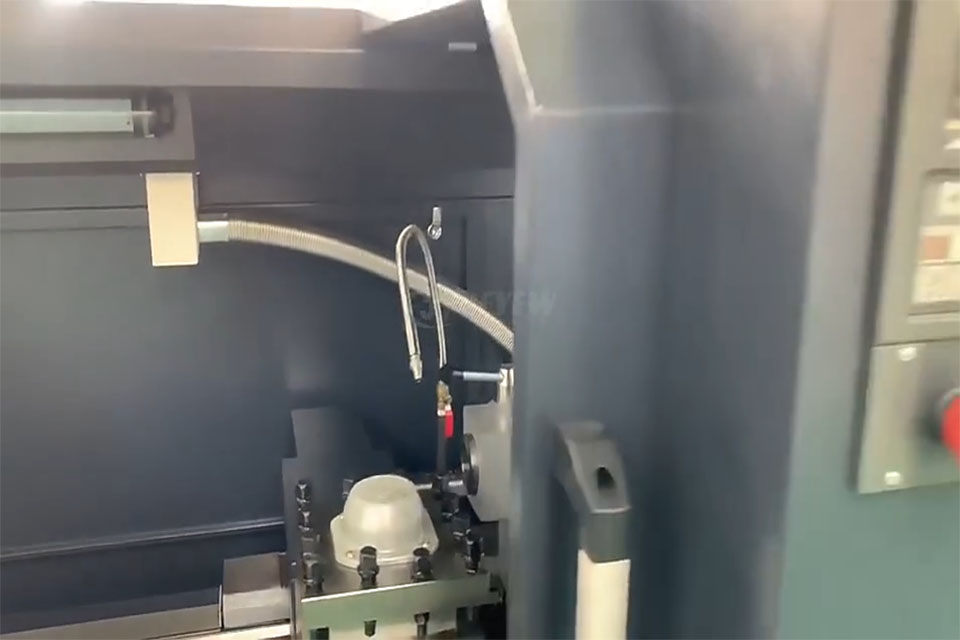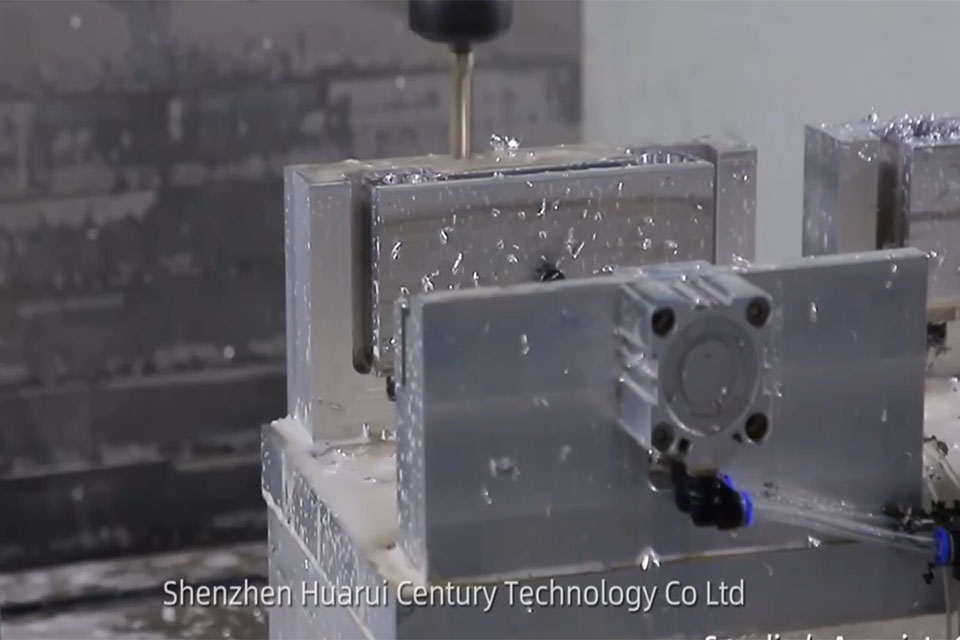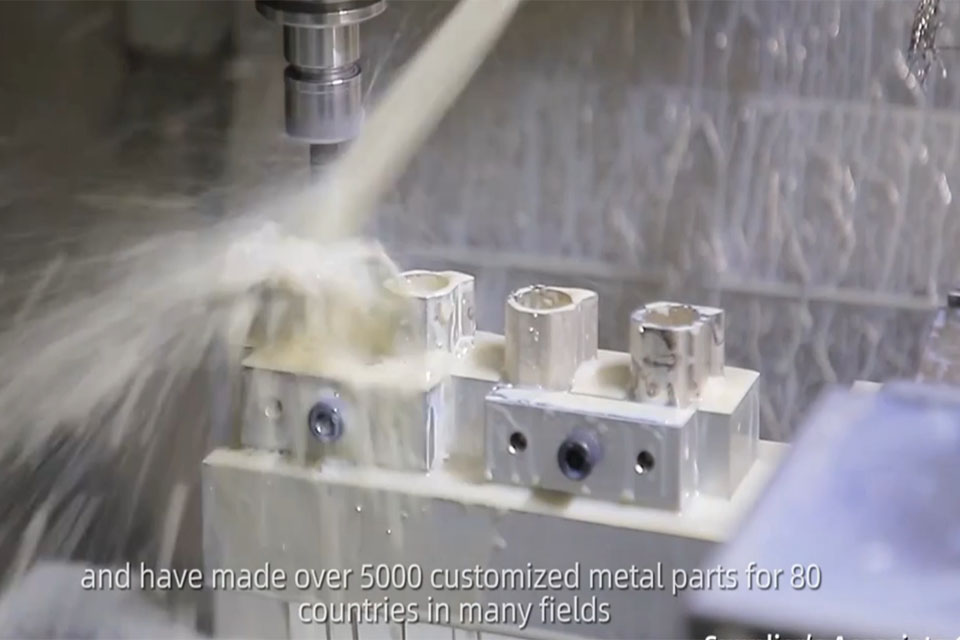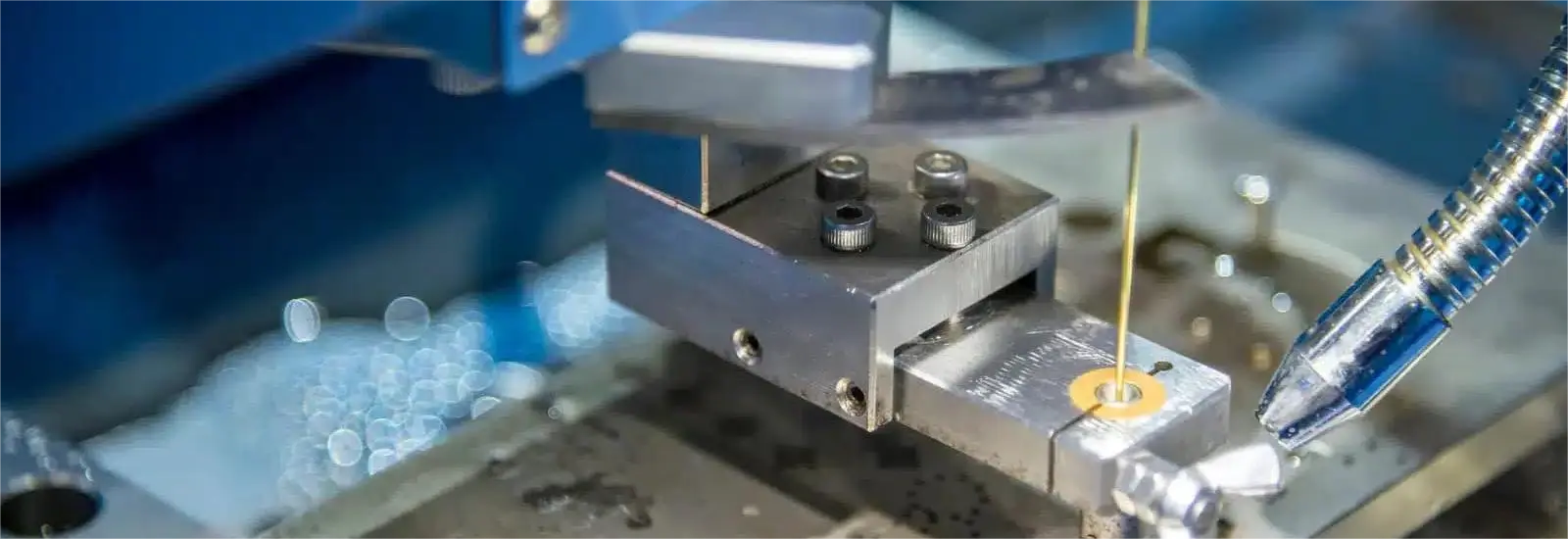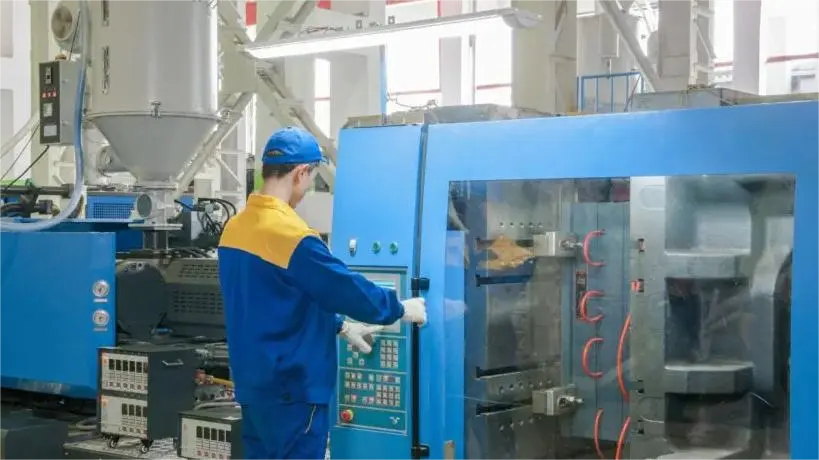
가공 공차 101: CNC 가공에 대한 종합 가이드
목차
소개
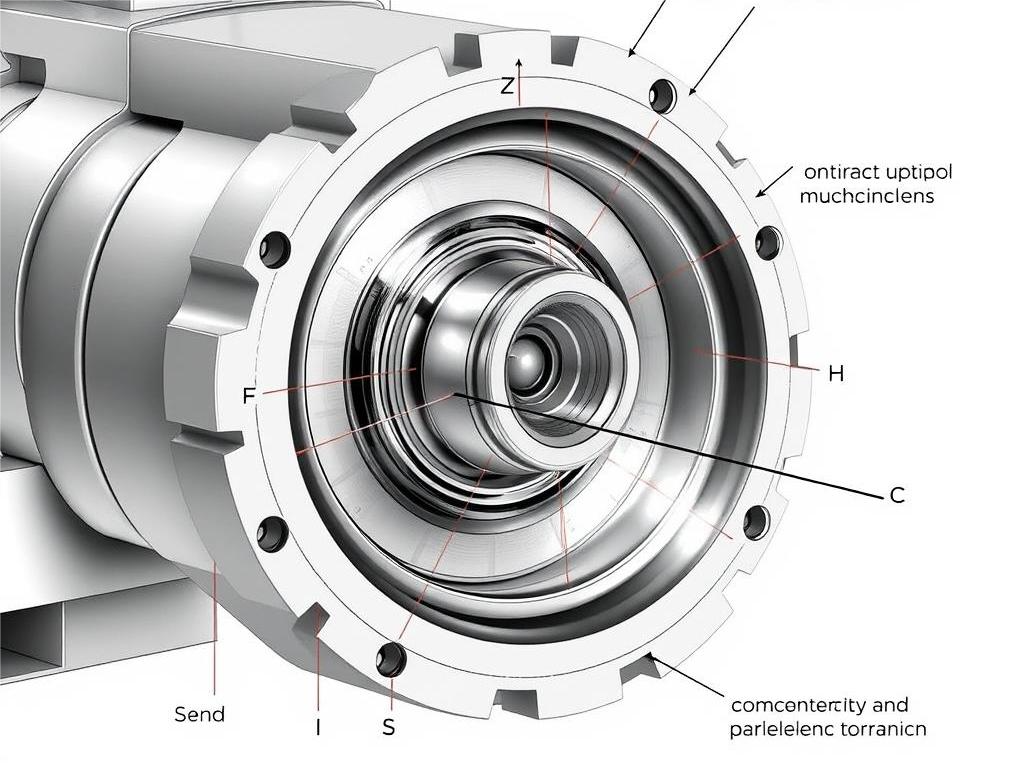
What is Tolerance in CNC Machining, and Why Does It Matter?
허용 오차 in CNC 가공 refers to the permissible variation for a specific dimension of a 가공 부품. It defines the acceptable range of deviation from the nominal dimension, usually represented as a plus or minus value. For instance, if a dimension is specified as 10 mm 와 허용 오차 of ±0.1 mm, the actual dimension can range from 9.9 mm to 10.1 mm. As a representative of a CNC 제작 services manufacturing plant, I can attest to the critical role 허용 오차 plays. It’s the backbone of precision in our industry.
왜 허용 오차 matter? Imagine assembling a complex machine like an aircraft engine. Every component must fit perfectly to ensure optimal performance and safety. 엄격한 허용 오차 are crucial in such cases. If the parts don’t fit within the specified 허용 오차, the entire assembly can fail. This is why, at our CNC 가공 service plant, we emphasize the importance of machining 높은 정밀도. 제 경험상, tighter tolerances often translate to higher quality, but they also come with increased costs and production time. A 허용 오차 of ±0.001″ is incredibly tight and requires specialized equipment and expertise. Striking the right balance between cost and quality is a key aspect of our job.
How Do Standard Machining Tolerances Impact Your Projects?
Standard machining tolerances are predefined 허용 오차 values typically used when a dimension doesn’t have a specified 허용 오차. 이 standard tolerances are based on the International Organization for Standardization (ISO) standards, such as ISO 2768, and provide a general guideline for 가공. Standard tolerance values are categorized into different classes, such as “fine,” “medium,” and “coarse,” based on the 허용 오차 range and the dimension’s nominal size. When I first started in the industry, understanding these classifications was crucial.
의 영향 standard machining tolerances on your projects can be significant. Using standard tolerance values can simplify the design process, as they provide a ready-made 허용 오차 framework. However, relying solely on standard tolerances might not be suitable for all applications. For instance, if you’re designing a critical component for a medical device, you might need tighter tolerances than what the “fine” class under ISO 2768 offers. This requires deeper collaboration between engineers and CNC experts to achieve the right level of precision. At our plant, we often engage in detailed discussions with clients to understand their specific needs and guide them toward the most appropriate 허용 오차 choices. Understanding the 허용 오차 needs from the outset can save time and resources. The American Society of Mechanical Engineers provides useful guidelines in these situations.
Types of Tolerances: Unilateral, Bilateral, and Limit – What’s the Difference?
In the world of CNC 가공, understanding the different types of tolerances is fundamental. 허용 오차 defines the allowable variation in a dimension, and it can be expressed in three main ways: 일방적 관용, 양방향 허용 오차및 limit tolerance. Each type serves a distinct purpose and impacts the design and manufacturing process differently.
일방적 관용 에서만 변형을 허용합니다. 한 방향 from the nominal size. For example, if a dimension is specified as 10 mm 와 일방적 관용 of +0.1 mm, the actual dimension can range from 10 mm to 10.1 mm, but not below 10 mm. 이 유형의 허용 오차 is often used when a part needs to fit into a specific space or mate with another component in a particular way. We often recommend 일방적 관용 in designs where clearance or interference fits are critical.
Bilateral tolerances allow variation in both directions from the nominal size. A common example is a dimension specified as 10 mm ±0.1 mm. This means the actual dimension can range from 9.9 mm to 10.1 mm. 양방향 허용 오차 is versatile and commonly used in general CNC 가공 applications. They offer a balanced approach to dimensional control, making them a popular choice in many projects.
Limit tolerance 는 상한 및 하한 of a dimension directly. For instance, a limit tolerance might be expressed as 9.9 mm to 10.1 mm. This method clearly defines the allowable range without needing a nominal size and a plus/minus value. We often use limit tolerance 에서 CNC 제작 plant when the absolute limits are critical, and the nominal size is less important.
올바른 유형의 허용 오차 프로젝트의 특정 요구 사항에 따라 다릅니다. 일방적 허용 오차 are ideal for ensuring a part fits in one specific direction, while bilateral tolerances offer a more balanced approach. Limit tolerances provide clear, direct limits that can be crucial for certain applications. It is 중요 to be clear when you specify these.
What Are Typical Machining Tolerances for Different Processes?
Typical machining tolerances 에 따라 달라집니다. 가공 프로세스 used. For example, CNC 밀링 typically achieves a standard tolerance of around ±0.1 mm (±0.004 inches). However, with specialized equipment and skilled operators, tighter tolerances down to ±0.025 mm (±0.001 inches) or even better can be achieved. When customers approach us with requirements for 높은 정밀도, we often suggest 정밀 가공 techniques combined with processes like grinding or lapping to meet those needs.
CNC 터닝, on the other hand, generally offers slightly tighter tolerances compared to milling. A standard tolerance 에 대한 CNC 터닝 is around ±0.05 mm (±0.002 inches), and with extra care, tolerances as tight as ±0.01 mm (±0.0004 inches) are achievable. In our 기계 공장, we’ve successfully delivered parts with even tighter tolerances for specialized applications, such as in the aerospace industry. It’s important to remember that achieving these 엄격한 허용 오차 often requires multiple passes, specialized 절단 도구, and careful monitoring of the 가공 프로세스.
기타 가공 methods, such as drilling or boring, have their own typical 허용 오차 ranges. Drilling usually has a wider 허용 오차, around ±0.2 mm (±0.008 inches), while boring can achieve 허용 오차 와 유사한 CNC 터닝. Grinding is a process known for its 정밀도, often used to achieve very 엄격한 허용 오차, in the range of ±0.005 mm (±0.0002 inches) or better. Each 가공 method has its strengths and limitations when it comes to 허용 오차, and understanding these nuances is crucial for selecting the right process for your project. It is important to know the 허용 오차 범위 that you need. Materials and machining go hand in hand for these projects.
How to Specify Tolerances for Your CNC Machined Parts?
Specifying 허용 오차 accurately is crucial for ensuring that your CNC 가공 부품 meet the required specifications. The first step is to identify the critical dimensions and features of your part. Consider which dimensions directly affect the part’s functionality, fit, and assembly with other components. Once you’ve identified these critical dimensions, you can start assigning appropriate 허용 오차. A good starting point is to consider standard machining tolerances based on ISO standards like ISO 2768. However, always evaluate whether these standard tolerances are sufficient for your specific application.
When specifying 허용 오차, use clear and unambiguous notation. For bilateral tolerances, use the ± symbol followed by the 허용 오차 value. For example, 20 mm ±0.1 mm indicates that the dimension can vary from 19.9 mm to 20.1 mm. For 일방적 허용 오차, specify the direction of the allowable variation, such as 20 mm +0.1 mm/-0 mm. This means the dimension can range from 20 mm to 20.1 mm but cannot be smaller than 20 mm. Limit tolerances are specified by providing the maximum and minimum allowable dimensions, for example, 19.9 mm – 20.1 mm.
It’s also essential to consider the 허용 오차 stack-up in assemblies. 허용 오차 stack-up refers to the cumulative effect of 허용 오차 when multiple parts are assembled. Each part’s 허용 오차 contributes to the overall variation in the assembly. To minimize 허용 오차 stack-up issues, carefully analyze how the 허용 오차 of individual parts interact and affect the final assembly dimensions. In our CNC 제작 plant, we often use advanced simulation tools to predict and manage 허용 오차 stack-up, ensuring that the final product meets the required specifications. When you are dealing with multiple part tolerances it is easy for errors to occur.
What Role Does Geometric Dimensioning and Tolerancing (GD&T) Play?
Geometric Dimensioning and Tolerancing (GD&T) is a symbolic language used to define a part’s geometry and its allowable variation. It goes beyond basic dimensional 허용 오차 by specifying the geometric characteristics of features, such as form, orientation, location, and runout. GD&T uses a set of standardized symbols and rules defined by the American Society of Mechanical Engineers (ASME) Y14.5 standard or ISO equivalents.
GD&T plays a crucial role in modern CNC 가공 by providing a more comprehensive and precise way to define a part’s requirements. For example, GD&T can specify the true position of a hole, which not only controls its location but also its perpendicularity to a surface. This level of control is often necessary for parts that need to interface precisely with other components. In my experience, GD&T helps to have better communication between design and manufacturing.
One of the key benefits of GD&T is that it defines the function and relationship of features, rather than just their size and location. For instance, profile tolerances can control the shape of a complex surface, ensuring that it fits correctly with a mating part. GD&T tolerances can be more complex to learn, but they offer much greater control over the final part. At our CNC 제작 plant, we’ve found that using GD&T reduces ambiguity and misinterpretation, leading to fewer errors and higher-quality parts. GD&T is particularly useful for complex parts with tight 허용 오차 요구 사항, such as those used in aerospace, medical devices, and other 고정밀 애플리케이션.
How to Achieve Tight Tolerance in CNC Machining?
달성 엄격한 허용 오차 in CNC 가공 requires a combination of factors, including the right equipment, skilled operators, and a well-defined process. 엄격한 허용 오차 refer to very small allowable variations, often in the range of ±0.01 mm (±0.0004 inches) or even tighter. One of the first considerations is the CNC 기계 itself. High-정밀도 machines with advanced features like linear motors, high-resolution encoders, and thermal stabilization are essential for achieving 엄격한 허용 오차. Regular maintenance and calibration of these machines are also critical.
Another crucial factor is the choice of 절단 도구. High-quality, sharp 절단 도구 designed for specific materials and operations can significantly impact the achievable 허용 오차. Tool wear must be monitored closely, as worn tools can lead to dimensional inaccuracies. In our 기계 공장, we use advanced tool management systems to track tool life and ensure that tools are replaced or sharpened before they affect part quality. CNC screw machining also plays a role here.
그리고 가공 process itself also plays a vital role. Techniques like using multiple finishing passes, optimizing cutting parameters (speed, feed, depth of cut), and employing advanced strategies like high-speed 가공 or trochoidal milling can help achieve tighter tolerances. Additionally, using specialized techniques like grinding, lapping, or honing as secondary processes can further refine dimensions and achieve extremely 엄격한 허용 오차. It’s also important to consider the material being machined, as some materials are more challenging to machine to 엄격한 허용 오차 than others. This is where working with experienced machinists can make a big difference.
What Are the International Standards for Machining Tolerances?
International standards for machining tolerances provide a common framework for specifying and interpreting 허용 오차 globally. The most widely recognized standards are those published by the International Organization for Standardization (ISO). ISO 2768 is a commonly used standard that defines general 허용 오차 for linear and angular dimensions. It specifies four 허용 오차 classes: f (fine), m (medium), c (coarse), and v (very coarse). Each class defines a tolerance range based on the nominal size of the dimension. These types of standardized tolerances make understanding requirements much simpler.
Another important ISO standard is ISO 286, which defines a system of limits and fits. It specifies 허용 오차 grades (IT grades) that define the 허용 오차 range for holes and shafts. IT grades range from IT01 to IT18, with lower numbers indicating tighter tolerances. For example, IT6 is a common 허용 오차 grade for precision fits, while IT11 might be used for looser clearance fits. These engineering tolerances are essential for anyone in the machining industry.
In addition to ISO standards, some industries use standards published by other organizations. For instance, the aerospace industry often uses standards developed by SAE International. These standards often build upon ISO standards but may include additional requirements or stricter 허용 오차 specific to aerospace applications. When working with international clients, we often encounter various standards. Being familiar with these different standards helps ensure that we meet all specified requirements. Understanding and adhering to these international standards is essential for ensuring consistency, quality, and interoperability in CNC 가공 across different countries and industries.
How Do Materials and Machining Methods Influence Tolerance?
The choice of material significantly impacts the achievable 허용 오차 in CNC 가공. Different materials have varying properties, such as hardness, thermal expansion, and machinability, which can affect dimensional stability and the 정밀도 의 가공 프로세스. For example, softer materials like aluminum and brass are generally easier to machine and can achieve tighter tolerances compared to harder materials like stainless steel or titanium. This is something we always discuss with clients during the material selection phase.
Harder materials often require more robust 절단 도구, slower cutting speeds, and more frequent tool changes, which can impact the achievable 허용 오차. Additionally, some materials are more prone to thermal expansion or contraction during 가공, which can affect dimensional accuracy. In our CNC 제작 plant, we work with a wide range of materials and have developed specific strategies for each to ensure optimal 허용 오차 control. For instance, when 가공 stainless steel, we often use specialized coolant systems to manage heat and maintain dimensional stability. We also consider plating and finishes in this stage.
그리고 가공 방법 itself also influences the achievable 허용 오차. As mentioned earlier, processes like CNC 밀링 및 CNC 터닝 have different typical 허용 오차 ranges. 정밀 가공 techniques, such as grinding or honing, can achieve much tighter tolerances compared to conventional 가공 methods. The choice of 가공 방법 특정 허용 오차 요구 사항, the complexity of the part, and the material being machined. We often combine different 가공 methods to achieve the desired results. For example, we might start with CNC 밀링 to remove most of the material and then use grinding to achieve the final dimensions and 엄격한 허용 오차.
What Are the Best Practices for Determining Tolerances?
Determining tolerances is a critical aspect of the design process that requires careful consideration of various factors. One of the first steps is to understand the function of the part and how it interacts with other components in an assembly. This will help identify the critical dimensions that require 엄격한 허용 오차 and those that can have looser 허용 오차. It’s also essential to consider the manufacturing process that will be used to produce the part. Different 가공 methods have varying capabilities when it comes to achieving 허용 오차, so it’s crucial to choose a process that can meet the required 정밀도.
Another best practice is to use standard tolerances whenever possible. Standards like ISO 2768 provide a good starting point for assigning 허용 오차 to non-critical dimensions. This can simplify the design process and reduce the risk of errors. However, always evaluate whether these standard tolerances are sufficient for your specific application. For critical dimensions, it’s often necessary to perform a detailed 허용 오차 analysis, considering factors like 허용 오차 stack-up, material properties, and environmental conditions.
Collaboration between designers, engineers, and machinists is also crucial for determining tolerances. Designers should consult with experienced machinists to understand the capabilities and limitations of the 가공 process. This can help avoid specifying 허용 오차 that are unnecessarily tight or difficult to achieve, which can increase costs and lead times. In our CNC 제작 plant, we encourage early collaboration between our clients’ design teams and our 가공 experts. This collaborative approach helps ensure that the specified 허용 오차 are realistic, achievable, and cost-effective. Finding the right tolerance for each project is essential.
Here is a simple table to illustrate some key points:
| 측면 | 설명 |
| 허용 오차 | Permissible variation in dimension. Essential for part functionality and assembly. |
| Standard Tolerance | Predefined values (e.g., ISO 2768) simplify design but may not suit all applications. |
| Tight Tolerance | Very small allowable variations, often ±0.01 mm or better. Requires specialized equipment and processes. |
| GD&T | Geometric Dimensioning and Tolerancing. Provides comprehensive control over part geometry beyond basic dimensional 허용 오차. |
| Material Impact | Material properties affect achievable 허용 오차. Softer materials generally allow for tighter tolerances than harder ones. |
| Process Impact | 다른 가공 methods have varying 허용 오차 기능을 사용할 수 있습니다. 정밀도 techniques like grinding offer the 가장 엄격한 허용 오차. |
자주 묻는 질문
What is the difference between unilateral and bilateral tolerance?
일방적 관용 allows variation in only one direction from the nominal size, while 양방향 허용 오차 allows variation in both directions. For example, a 일방적 관용 might be 10 mm +0.1 mm/-0 mm와 양방향 허용 오차 would be 10 mm ±0.1 mm. Choosing between them depends on how a part needs to fit or function within an assembly.How tight of a tolerance can CNC machining achieve?
CNC 가공 can achieve very 엄격한 허용 오차, often down to ±0.01 mm (±0.0004 inches) or even better with specialized equipment and processes. High-precision machines, specialized 절단 도구, and techniques like grinding or honing can further refine dimensions to achieve extremely 엄격한 허용 오차, sometimes in the range of ±0.005 mm (±0.0002 inches) or less.What is a standard tolerance in CNC machining?
A standard tolerance in CNC 가공 refers to predefined 허용 오차 values that are commonly used when a dimension doesn’t have a specified 허용 오차. 이 standard tolerances are often based on international standards like ISO 2768, which defines general tolerances for linear and angular dimensions. They are categorized into different classes like “fine,” “medium,” and “coarse,” providing a general guideline for 가공. 사용 standard machining tolerances can greatly simplify the process.How does material choice affect machining tolerance?
Material choice significantly impacts achievable 허용 오차. Softer materials like aluminum and brass are generally easier to machine and can achieve tighter tolerances compared to harder materials like stainless steel or titanium. Material properties such as hardness, thermal expansion, and machinability all play a role in determining how precisely a part can be machined.What is GD&T, and why is it important?
Geometric Dimensioning and Tolerancing (GD&T) is a system for defining and communicating engineering 허용 오차. It uses a symbolic language to specify the allowable variation in part geometry, including form, orientation, location, and runout. GD&T is important because it provides a more comprehensive and precise way to define a part’s requirements compared to using only basic dimensional 허용 오차. It helps ensure that parts fit and function correctly in an assembly, especially for complex components with 엄격한 허용 오차 요구 사항. GD&T also helps reduce ambiguity and misinterpretation between design and manufacturing.How can I ensure my CNC machined parts meet the specified tolerances?
To ensure your CNC 가공 부품 meet the specified 허용 오차, it’s essential to work with an experienced CNC 가공 service provider that has the right equipment, skilled operators, and a robust quality control process. Clearly communicate your 허용 오차 요구 사항, use appropriate 허용 오차 notations, and consider using GD&T for critical dimensions. Regular communication between your design team and the 가공 experts can also help ensure that everyone understands the requirements and that the parts are produced to the correct specifications.
주요 내용
허용 오차 is the permissible variation in a dimension and is crucial for part functionality and assembly.
Standard machining tolerances, based on standards like ISO 2768, provide a general guideline but may need adjustment for specific applications.
Unilateral, 양방향및 limit tolerances offer different ways to specify allowable variation, each with its own use cases.
엄격한 허용 오차 require specialized equipment, 절단 도구및 가공 프로세스.
GD&T provides a comprehensive way to define part geometry and 허용 오차, going beyond basic dimensional 허용 오차.
Material choice and 가공 method significantly influence achievable 허용 오차.
Collaboration between designers and machinists is essential for determining realistic and cost-effective 허용 오차.
Adhering to international standards for machining tolerances ensures consistency and quality in global manufacturing.
As an experienced professional in the CNC 제작 industry, I’ve seen firsthand how crucial understanding machining tolerances is for producing high-quality parts. Whether you’re designing a simple bracket or a complex aerospace component, paying attention to 허용 오차 can make the difference between success and failure. I hope this comprehensive guide has provided you with valuable insights into the world of CNC machining tolerances. Remember, 정밀도 is not just about hitting the numbers; it’s about ensuring that every part fits perfectly, functions flawlessly, and contributes to the overall success of your project. If you have a project requiring 온디맨드 제조, contact us today, we are experts in CNC 가공 and will be able to assist you with your needs. Our 제작 서비스 are second to none, utilizing 판금 제작 및 알루미늄 압출. 당사의 전문성은 다음과 같이 확장됩니다. 표면 마감, ensuring every project meets the highest standards of quality and precision.
댓글
우수 제품 사례
태그
관련 블로그
블로그에서 CNC 제작에 대한 최신 트렌드와 사실을 확인하세요.

